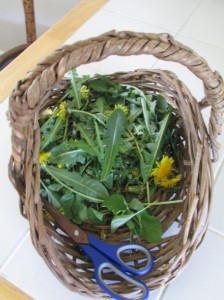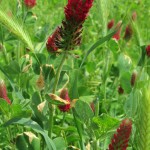 Herb & Traditional Medicine History
Herb & Traditional Medicine History
People of various cultures have recognized herbs for their spirit and power for thousands for years. Wild and domesticated animals past and present also take advantage of the natural pharmacy available to them. As part of their utilization of herbs, indigenous people worldwide honor both the spirit and the physical being when harvesting these wonderful plants for their culinary and medicinal uses.
The true power of the herbs is only really obtained when the entire part of the plants are utilized, not just their active ingredient(s) as is done with so many modern day pharmaceuticals. When used properly, herbs rarely have side effects. Many different ones can be combined together to form powerful healing teams. Also in the wild it is found that herbs that cause a challenge of some kind, and heal that same challenge often grow close by one another. (i.e. stinging nettle and plantain).
It is this power and wisdom that so many people desire to reconnect with, and when used with love and respect can be a big piece of bringing people once again in harmony with themselves and the wonderful Earth realms planet that support us all.
Basic Herb Terminology
Signatures of Plants
The physical appearance and growing environment of a plant often denotes its nutritive or healing properties. This is referred to as the plant signature. Various types of signatures include the following:
Flower color and shape
- blue / purple – sedative or calming herbs; also good blood purifiers when used in tonics. Examples include: blue valerian, purple passion flower, lavender
- red – blood purifiers or alteratives; also often antibiotic in nature. Examples include: Echinacea
- yellow – generally utilized for liver, gallbladder, urinary tract problems and detoxification and infection fighting tonics. Examples: chamomile, eyebright, dandelion
- white -***
Growing conditions in the wild
- Plants that grow close to water are usually diuretic in nature. Examples include: stinging nettle, broad leafed plantain
- Plants growing in gravel based soil generally are good for assisting with illnesses that cause stones or gravel in the body. They cleanse the alimentary and bronchial systems of harmful accumulations and can assist in dissolving or preventing kidney stones / gallstones. Examples: parsley, peppergrass, shepherd’s purse, sassafras and mullein.
- Herbs growing in swampy or wet ground are good for assisting with the balancing of excessive mucous excretions in the respiratory or other body systems. Examples: Willow, Verbena, Boneset, Elder
Body, leaf or root structure
- Medicinal herbs may display a body, leaf, flower or root structure that provides hints as to its medicinal powers. Examples include: skullcap whose flower is the shape of the cap of a skull; horehound whose leaf shape is similar to that of a lung, etc.
Textures
- Soft textures indicate an aid for treating inflamed or swollen areas. They are also good for “wet” colds and respiratory ailments. (Emollient herbs). Examples include: Horehound, Mullein, Hollyhocks




